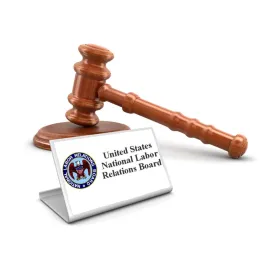Since 2015, employers have faced continued uncertainty regarding which standard the National Labor Relations Board (“NLRB” or the “Board”) will apply when determining joint-employer status under the National Labor Relations Act (“NLRA”). Businesses utilizing contractors and staffing firms or operating in partnering arrangements, as well as those engaged in providing temporaries and other contingent workers, have faced a moving target before the Board when it comes to potential responsibility in union recognition, bargaining obligations, and unfair labor practice cases.
We’ve previously reported on the somewhat tortured history of the evolving joint-employer standard, which the Board first significantly revised in 2015 in Browning-Ferris Industries, 362 NLRB No. 186. In that decision, the Board held that an employer which merely possesses the authority to control the terms and conditions of employment, either directly or indirectly, and even when that authority is not exercised, may nonetheless be a joint-employer under the NLRA.
In 2017, following a shift in the composition of the Board to a majority of Republican appointees, the Board discarded the Browning-Ferris standard in its decision in Hy-Brand Industrial Contractors Ltd. and Brandt Construction Co., and returned to its prior test for determining joint-employer status. Under Hy-Brand, the Board reverted to a test based on the common law, which required a putative joint-employer to possess “direct and immediate” control over the essential terms and conditions of employment of employees of another business, and actually exercise joint control, rather than simply reserve the right to exercise such control.
The return to the traditional joint-employer test, however, was short-lived. In 2018, the Board vacated its decision in Hy-Brand due to a finding by the Board’s Designated Agency Ethics Official that Member William Emanuel should have been disqualified from participating in the Hy-Brand decision because of potential conflict-of-interest concerns. As a result of the decision to vacate Hy-Brand, the Board once again returned to the Browning-Ferris standard for determining joint-employer status, which remains the applicable legal standard at this time.
However, the joint-employer roller coaster continued to roll when the Board published a notice of proposed rulemaking regarding the standard for determining joint-employer status on September 14, 2018. The proposed rule would again reverse the Browning-Ferris decision and provide that employers will only be considered joint-employers where the putative employer possesses and exercises “substantial direct and immediate control over the essential terms and conditions of employment of another employer’s employees in a manner that is not limited and routine.” The Board received a large number of submissions in the public comment period, resulting in three extensions of the time for the submission of comments regarding the proposed rule to accommodate the overwhelming response.
After the conclusion of the public comment period, Representatives Bobby Scott and Frederica Wilson issued a letter to Board Chairman John Ring regarding what the Representatives perceived was an inappropriate method for internally reviewing the nearly 29,000 public comments the Board received in response to the proposed rule. In particular, Representatives Scott and Wilson raised concerns that the Board was freezing out agency professional staff in the review process by outsourcing the substantive review of public comments to private contractors, and that such outsourcing raised potential conflict-of-interest concerns.
On March 22, 2019, Chairman Ring submitted a response back to Representatives Scott and Wilson regarding the Board’s process for reviewing the public comments received in response to the proposed joint-employer rule. In the response, Chairman Ring agreed that outsourcing substantive review of public comments could create the appearance of conflicts of interest, but stated that the Representatives were “misinformed” about the Board’s review process.
Ring clarified that the Board was utilizing a temporary employment agency contracted through the General Service Administration’s bid process, and that the temporary employees’ work would be limited to sorting and coding the public comments for later substantive review by the Board’s staff. Countering the lawmakers’ suggestion of Board impropriety, Chairman Ring stated that the Board took due consideration of all conflict-of-interest issues in the bid process for contracting out the work. The response further emphasized the routine nature of federal agencies contracting out such coding and sorting work, and the inefficient use of resources that utilizing the Board’s attorneys to perform ministerial document-processing work would entail. Lastly, Ring noted that the Board previously shared the decision to contract out the initial sorting work to its staff and received no negative reaction to the announcement.
As has been the case each step of the way, the joint-employer saga has evoked impassioned responses from both management and labor alike. There is little doubt the Board’s final joint-employer rule will elicit anything less. Stay tuned for the next chapter when the Board publishes its final rule in the coming weeks.




 />i
/>i
